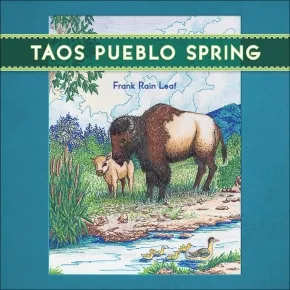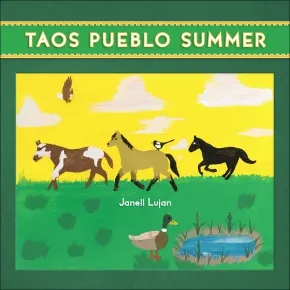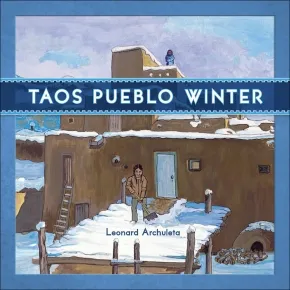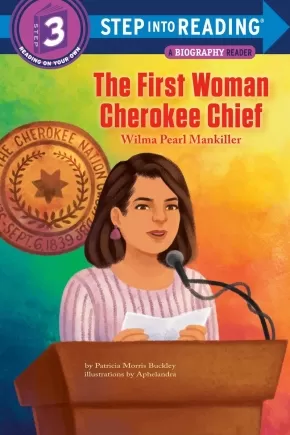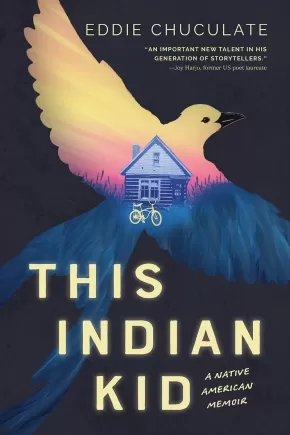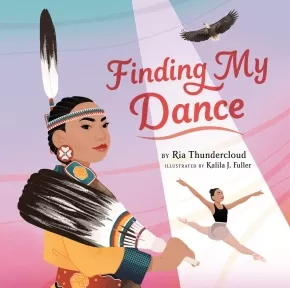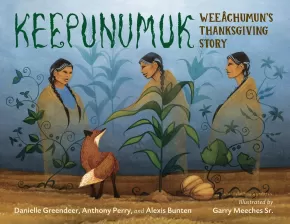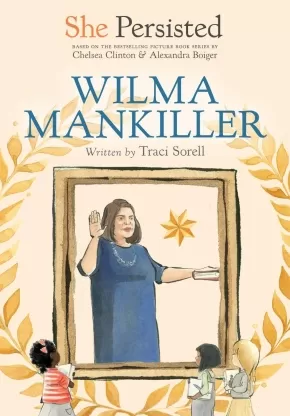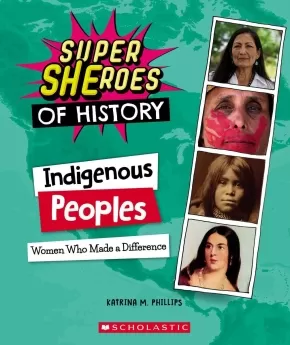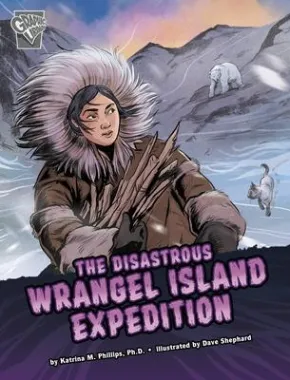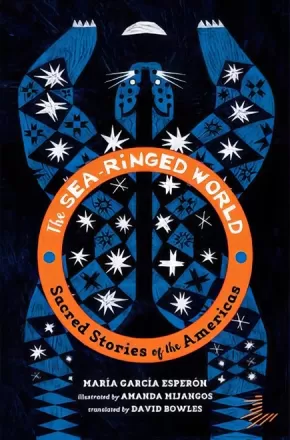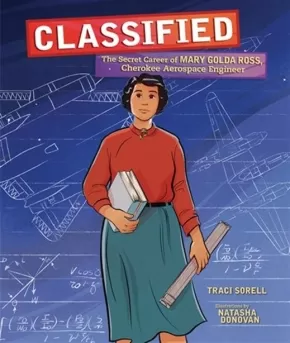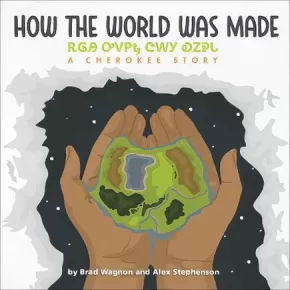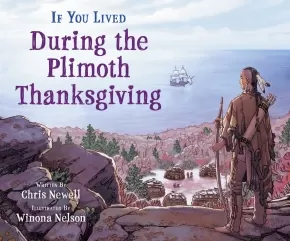
Native American
46
-
60
of
80 Results;
Sort By
Go To
of 6
Taos Pueblo Spring (BB)
$14.95
Artists:
Format:
Board Book
Text Content Territories:
Indigenous American; Native American; Taos Pueblo;
Grade Levels: Preschool;
ISBN / Barcode: 9781570674143
Synopsis:
Synopsis:
This delightful board book, written without text, was created by the Taos Pueblo's Tiwa Language Program to preserve the Tiwa culture and revitalize the Tiwa language by teaching it to younger generations. Many other Indigenous languages also need revitalizing, so it is the hope of the Taos Pueblo's Tiwa Language Program that other American Indian Nations will find the books in the Toas Pueblo Four Seasons series useful to teach their language to young children. The beautiful, hand-drawn illustrations will also teach young children about the four seasons of the year. All proceeds of the book support the Taos Pueblo's Tiwa Language Program.
This text-free board book allows Indigenous nations to teach their own languages to children.
Educator & Series Information
This wordless book is part of the Taos Pueblo Four Seasons series.
We are the "Red Willow People" of Taos Pueblo and have sustained our ancient village as one of the longest continuously inhabited communities, for over 1,000 years. Taos Pueblo is located in northern New Mexico and our Tiwa language is a dialect of the Tanoan language, which is not a written language. Traditionally we learn our Tiwa Language through oral tradition but we are in danger of losing our ancient language due to colonization, modernization, and the shift from Tiwa as our first language to English as our first language. The efforts of the Taos Pueblo Tiwa Language Program are focused on revitalizing the Tiwa Language and culture by protecting and preserving it, through teaching it to our younger generations.
This text-free board book allows Indigenous nations to teach their own languages to children.
Additional Information
22 pages | 8" x 8" | Board Book
Taos Pueblo Summer (BB)
$14.95
Artists:
Format:
Board Book
Text Content Territories:
Indigenous American; Native American; Taos Pueblo;
Grade Levels: Preschool;
ISBN / Barcode: 9781570673696
Synopsis:
Synopsis:
This delightful board book, written without text, was created by the Taos Pueblo's Tiwa Language Program to preserve the Tiwa culture and revitalize the Tiwa language by teaching it to younger generations. Many other Indigenous languages also need revitalizing, so it is the hope of the Taos Pueblo's Tiwa Language Program that other American Indian Nations will find the books in the Toas Pueblo Four Seasons series useful to teach their language to young children. The beautiful, hand-drawn illustrations will also teach young children about the four seasons of the year. All proceeds of the book support the Taos Pueblo's Tiwa Language Program.
This text-free board book allows Indigenous nations to teach their own languages to children.
Educator & Series Information
This wordless book is part of the Taos Pueblo Four Seasons series.
We are the "Red Willow People" of Taos Pueblo and have sustained our ancient village as one of the longest continuously inhabited communities, for over 1,000 years. Taos Pueblo is located in northern New Mexico and our Tiwa language is a dialect of the Tanoan language, which is not a written language. Traditionally we learn our Tiwa Language through oral tradition but we are in danger of losing our ancient language due to colonization, modernization, and the shift from Tiwa as our first language to English as our first language. The efforts of the Taos Pueblo Tiwa Language Program are focused on revitalizing the Tiwa Language and culture by protecting and preserving it, through teaching it to our younger generations.
This text-free board book allows Indigenous nations to teach their own languages to children.
Additional Information
22 pages | 8" x 8" | Board Book
Taos Pueblo Winter (BB)
$14.95
Artists:
Format:
Board Book
Text Content Territories:
Indigenous American; Native American; Taos Pueblo;
Grade Levels: Preschool;
ISBN / Barcode: 9781570673450
Synopsis:
Synopsis:
This delightful board book, written without text, was created by the Taos Pueblo's Tiwa Language Program to preserve the Tiwa culture and revitalize the Tiwa language by teaching it to younger generations. Many other Indigenous languages also need revitalizing, so it is the hope of the Taos Pueblo's Tiwa Language Program that other American Indian Nations will find the books in the Toas Pueblo Four Seasons series useful to teach their language to young children. The beautiful, hand-drawn illustrations will also teach young children about the four seasons of the year. All proceeds of the book support the Taos Pueblo's Tiwa Language Program.
This text-free board book allows Indigenous nations to teach their own languages to children.
Educator & Series Information
This wordless book is part of the Taos Pueblo Four Seasons series.
We are the "Red Willow People" of Taos Pueblo and have sustained our ancient village as one of the longest continuously inhabited communities, for over 1,000 years. Taos Pueblo is located in northern New Mexico and our Tiwa language is a dialect of the Tanoan language, which is not a written language. Traditionally we learn our Tiwa Language through oral tradition but we are in danger of losing our ancient language due to colonization, modernization, and the shift from Tiwa as our first language to English as our first language. The efforts of the Taos Pueblo Tiwa Language Program are focused on revitalizing the Tiwa Language and culture by protecting and preserving it, through teaching it to our younger generations.
This text-free board book allows Indigenous nations to teach their own languages to children.
Additional Information
22 pages | 7.90" x 7.90" | Board Book
The First Woman Cherokee Chief: Wilma Pearl Mankiller
$7.99
Format:
Paperback
Text Content Territories:
Indigenous American; Native American; Cherokee; Cherokee Nation (Cherokee Nation of Oklahoma);
ISBN / Barcode: 9780593568507
Synopsis:
Synopsis:
Find out all about Wilma Pearl Mankiller, the first woman Cherokee chief whose image will appear on a 2022 US quarter, in this Step 3 Biography Reader.
In 1985, Wilma Pearl Mankiller became the first woman Principal Chief of the Cherokee Nation. She had to convince her people that the chief should be the best person for the job, man or woman.
Before the English came to what is now the United States, Cherokee women and men shared the leadership of the tribe. This created balance. But the English colonists told the Native People that men should be in charge.
It stayed that way for many years, until Wilma Pearl Mankiller made history. She used the concept of gaduji, of everyone helping each other, to make the Cherokee Nation strong.
Step 3 Readers feature engaging characters in easy-to-follow plots and popular topics—for children who are ready to read on their own.
Reviews
“This work is historically accurate on an underrepresented topic in the curriculum.” —School Library Journal
Educator & Series Information
Recommended for ages 5 to 8.
This book is part of the Step Into Reading series. This series is designed to give every child a successful reading experience. The grade levels are only guides; children will progress through the steps at their own speed, developing confidence in their reading. The F&P Text Level on the back cover serves as another tool to help you choose the right book.
Step 3 Readers feature engaging characters in easy-to-follow plots and popular topics—for children who are ready to read on their own.
Additional Information
48 pages | 6.06" x 9.00" | Paperback
This Indian Kid: A Native American Memoir
$26.99
Format:
Hardcover
Text Content Territories:
Indigenous American; Native American; Muscogee (Creek);
ISBN / Barcode: 9781338802085
Synopsis:
Synopsis:
Award-winning author Eddie Chuculate recounts his experience growing up in rural Oklahoma, from boyhood to young manhood, in an evocative and vivid voice.
These books help readers learn about the world in which they live and develop their critical thinking skills so that they may become dynamic citizens who are able to analyze and understand our past, participate in essential discussions about our present, and work to grow and build our future.
"Granny was full-blooded Creek, but the Bureau of Indian Affairs insisted she was fifteen-sixteenths. She showed her card to me. I’d sit at the kitchen table and stare at her when she was eating, wondering how you can be a sixteenth of anything."
Growing up impoverished and shuttled between different households, it seemed life was bound to take a certain path for Eddie Chuculate. Despite the challenges he faced, his upbringing was rich with love and bountiful lessons from his Creek and Cherokee heritage, deep-rooted traditions he embraced even as he learned to live within the culture of white, small-town America that dominated his migratory childhood.
Award-winning author Eddie Chuculate brings his childhood to life with spare, unflinching prose. This book is at once a love letter to his Native American roots and an inspiring and essential message for young readers everywhere, who are coming of age in an era when conversations about acceptance and empathy, love and perspective are more necessary than ever before.
Educator Information
For ages 12+
This book is part of Scholastic Focus, the premier home of thoroughly researched, beautifully written, and thoughtfully designed works of narrative nonfiction aimed at middle-grade and young adult readers.
Additional Information
240 pages | 5.50" x 8.25" | Hardcover
Finding My Dance
$24.99
Artists:
Format:
Hardcover
Text Content Territories:
Indigenous American; Native American; Ho-Chunk (Winnebago); Sandia Pueblo;
ISBN / Barcode: 9780593093894
Synopsis:
Synopsis:
In her debut picture book, professional Indigenous dancer Ria Thundercloud tells the true story of her path to dance and how it helped her take pride in her Native American heritage.
At four years old, Ria Thundercloud was brought into the powwow circle, ready to dance in the special jingle dress her mother made for her. As she grew up, she danced with her brothers all over Indian country. Then Ria learned more styles--tap, jazz, ballet--but still loved the expressiveness of Indigenous dance. And despite feeling different as one of the only Native American kids in her school, she always knew she could turn to dance to cheer herself up.
Follow along as Ria shares her dance journey--from dreaming of her future to performing as a professional--accompanied by striking illustrations that depict it while bringing her graceful movements to life.
Reviews
"A warmly illustrated memoir of dance and culture, this will have broad appeal about using art for expression and to overcome difficulties." —School Library Journal, starred review
"A moving picture book about the resilience one can find in one’s cultural inheritance." —Kirkus Reviews
Educator Information
Recommended for ages 4 to 8.
Additional Information
40 pages | 10.44" x 10.31" | Hardcover
Keepunumuk: Weeachumun's Thanksgiving Story
$22.99
Artists:
Format:
Hardcover
Text Content Territories:
Indigenous American; Native American; Wampanoag (Wôpanâak); Mashpee Wampanoag Tribe;
ISBN / Barcode: 9781623542900
Synopsis:
Synopsis:
In this Wampanoag story told in a Native tradition, two kids from the Mashpee Wampanoag tribe learn the story of Weeâchumun (corn) and the first Thanksgiving.
The Thanksgiving story that most Americans know celebrates the Pilgrims. But without members of the Wampanoag tribe who already lived on the land where the Pilgrims settled, the Pilgrims would never have made it through their first winter. And without Weeâchumun (corn), the Native people wouldn't have helped.
An important picture book honoring both the history and tradition that surrounds the story of the first Thanksgiving.
Reviews
"A Wamponoag grandmother plants her garden with weeâchumun (corn), beans, and squash, or the Three Sisters. When her grandchildren ask to hear the story of Thanksgiving, N8hkumuhs tells them that their people call it Keepunumuk, “the time of harvest,” and explains what really happened. The tale opens with Seagull warning Weeâchumun—depicted as a woman with a translucent body—of the Pilgrims’ arrival; Weeâchumun worries because many of the First Peoples who cared for her have gone to the Spirit World, and she fears this will be her last winter. Fox keeps an eye out and in spring tells Weeâchumun and her sisters that the newcomers endured a hard winter; many died. Weeâchumun and her sisters want to help: “We will send the First Peoples to help the newcomers.” The Wampanoag people teach the survivors how to plant corn, beans, and squash. The settlers hold a feast to celebrate the harvest; though it’s remembered by many as the first Thanksgiving, backmatter explains that because of the disease and warfare brought by the settlers, for the Wampanoag people, it is remembered as a day of mourning. Rich, saturated acrylics imbued with a touch of magic add to the vibrancy of this important, beautiful story. A much-needed Thanksgiving retelling that centers the Wamponoag people. (glossary, information on the Wampanoag map, recipes) (Picture book. 3-7)" —Kirkus, starred review
"This picture book features a contemporary Wampanoag grandmother and her grandchildren. N8hkumuhs shares the story of the Three Sisters—Corn, Beans, and Squash—and the first Thanksgiving, known as “Keepunumuk” by the Wampanoag people. The book transitions into a combination of history and storytelling about contact between the “First Peoples” and the newcomers. This format will be novel to some young children given the setting and timeframe of the story, though the book attempts to differentiate the parts that are the story by changing the typeface and including ethereal-like images of the Three Sisters. “Before You Begin” and “Important Words to Know” sections also provide context. Rich back matter includes more information about the Wampanoag tribes, a traditional recipe, and a photo and information about the real Maple and Quill, the grandchildren in the story. Overall, this story is a good addition for the historical knowledge of the first Thanksgiving from the Wampanoag viewpoint. VERDICT: A good choice for libraries striving to share Indigenous perspectives."— School Library Journal
Additional Information
32 pages | 11.38" x 8.81" | Hardcover
She Persisted: Wilma Mankiller
$7.99
Format:
Paperback
Text Content Territories:
Indigenous American; Native American; Cherokee; Cherokee Nation (Cherokee Nation of Oklahoma);
ISBN / Barcode: 9780593403051
Synopsis:
Synopsis:
The descendant of Cherokee ancestors who had been forced to walk the Trail of Tears, Wilma Mankiller experienced her own forced removal from the land she grew up on as a child. As she got older and learned more about the injustices her people had faced, she dedicated her life to instilling pride in Native heritage and reclaiming Native rights. She went on to become the first woman Principal Chief of the Cherokee Nation.
In this chapter book biography by award-winning author Traci Sorell, readers learn about the amazing life of Wilma Mankiller--and how she persisted.
Complete with an introduction from Chelsea Clinton, black-and-white illustrations throughout, and a list of ways that readers can follow in Wilma Mankiller's footsteps and make a difference!
Educator Information
Recommended for ages 6 to 9.
This book is part of the She Persisted series, a chapter book series about women who spoke up and rose up against the odds.
Additional Information
80 pages | 5.31" x 7.63" | Paperback
Super SHEroes of History: Women Who Made a Difference (Indigenous Peoples)
$9.99
Format:
Paperback
Text Content Territories:
Indigenous American; Indigenous Canadian;
ISBN / Barcode: 9781338840742
Synopsis:
Synopsis:
Meet the Super SHEroes of History, the women who have shaped history and society since ancient times.
Indigenous women were prominent members of their communities long before Europeans reached North America. When the newcomers arrived, they played a key role in holding their communities together in the face of social turmoil. Some joined male warriors to fight European settlement, while others such as Nanyehi/Nancy Ward argued that the two peoples could coexist peacefully. Indigenous women led political and legal fights to preserve their traditional rights throughout the 20th century and still do so today. Some became active campaigners in numerous causes, especially in the struggle to protect sacred lands from construction. This book tells their stories and describes their vital contributions.
Educator Information
Recommended for ages 8 to 12.
Additional Information
48 pages | 7.12" x 8.37" | Paperback
The Disastrous Wrangel Island Expedition
$11.99
Artists:
Format:
Paperback
Text Content Territories:
Indigenous American; Alaska Native; Inupiat (Alaskan Inuit);
ISBN / Barcode: 9781666322361
Synopsis:
Synopsis:
In 1921, Inupait seamstress Ada Blackjack joined a a group of four white men who wanted to establish a trading post on Wrangel Island in the freezing Arctic Ocean. The explorers were stranded on the island when their return ship was forced to turn back due to ice. Facing harsh conditions and dwindling food supplies, the men died one by one, but Ada remained. Find out how she alone managed to survive the disastrous expedition.
Reviews
"The lesser-known 1921 Wrangel Island Expedition is chronicled in this graphic novel.... The book begins by introducing its two key players: Ada Blackjack (a young Inuit single mother from Nome, Alaska) and Vilhjalmur Steffansson (an aging white explorer of Icelandic heritage). Steffansson was determined to establish a European colony on Wrangel Island, off the coast of Siberia. He assembled a five-man team of explorers, and Blackjack, desperate for money, joined them. While the writing is a bit stilted, the artwork makes the tale quite lively, especially once the expedition reaches the uninhabited island. Readers will become engrossed in the team’s efforts to survive and be impressed with how Blackjack proves herself the most capable person there; indeed, she’s the sole survivor. A map and additional information conclude."— Julia Smith, Booklist
Educator Information
Recommended for ages 8 to 11.
Additional Information
32 pages | 7.00" x 9.00" | Paperback
The Sea-Ringed World: Sacred Stories of the America
$25.99
Artists:
Format:
Paperback
Text Content Territories:
Indigenous American; Alaska Native; Alutiiq (Sugpiaq); Native American; Anishinaabeg; Ojibwe (Chippewa); Hopi; Sioux; Indigenous Canadian; Inuit; Indigenous Caribbean; Taino; Indigenous Central American; Indigenous Peoples in Costa Rica; Bribri; Indigenous Peoples in Mexico; Huichol; Nahuas; Maya; Nahuas; Indigenous South American;
ISBN / Barcode: 9781646141517
Synopsis:
Synopsis:
A collection of stories from nations and cultures across our two continents—the Sea-Ringed World, as the Aztecs called it—from the Andes all the way up to Alaska.
Fifteen thousand years before Europeans stepped foot in the Americas, people had already spread from tip to tip and coast to coast. Like all humans, these Native Americans sought to understand their place in the universe, the nature of their relationship with the divine, and the origin of the world into which their ancestors had emerged. The answers lay in their sacred stories.
Educator Information
Recommended for ages 8+
Additional Information
256 pages | 6.31" x 9.11" | Paperback
Bebikaan-ezhiwebiziwinan Nimkii: The Adventures of Nimkii
$30.00
Artists:
● Butzin Rachel (Indigenous;)
Format:
Hardcover
Text Content Territories:
Indigenous American; Native American; Anishinaabeg; Ojibwe (Chippewa); Indigenous Canadian; First Nations; Anishinaabeg; Ojibway;
ISBN / Barcode: 9781736551912
Synopsis:
Synopsis:
In this beautifully illustrated children’s book, readers will experience the world in a new way as they see the seasons through the joyful eyes of Nimkii, a fun, nature-loving dog who will teach them a whole new language: Ojibwemowin, a language spoken by the indigenous tribes in parts of Michigan, Ontario, northern Minnesota and Wisconsin, and Alberta.
Whether hunting for maple trees in the fall, playing in the snow in the winter, enjoying the spring showers, or swimming in the summer, Nimkii seeks out activities that allow her to enjoy her natural surroundings. Fun and inspiring, this bilingual book helps children and adults communicate in new ways while exploring different elements of culture.
Educator Information
Children's Literature
Dual-language: English and Ojibwemowin
Translated by Margaret Noodin, of the Pine Marten Clan.
Additional Information
38 pages | 11.00" x 8.50" | Hardcover
Classified: The Secret Career of Mary Golda Ross, Cherokee Aerospace Engineer
$30.50
Artists:
Format:
Hardcover
Text Content Territories:
Indigenous American; Native American; Cherokee;
ISBN / Barcode: 9781541579149
Synopsis:
Synopsis:
Mary Golda Ross designed classified airplanes and spacecraft as Lockheed Aircraft Corporation's first female engineer. Find out how her passion for math and the Cherokee values she was raised with shaped her life and work.
Cherokee author Traci Sorell and Métis illustrator Natasha Donovan trace Ross's journey from being the only girl in a high school math class to becoming a teacher to pursuing an engineering degree, joining the top-secret Skunk Works division of Lockheed, and being a mentor for Native Americans and young women interested in engineering. In addition, the narrative highlights Cherokee values including education, working cooperatively, remaining humble, and helping ensure equal opportunity and education for all.
Awards
- 2021 Junior Library Guild Selection winner
- 2021 Eureka! Children's Book Award Winner
- 2021 A Mighty Girl's Book fo the Year winner
- 2022 Rise: A Feminist Book Project List winner
- 2022 Cooperative Children's Book Centre Choices winner
Reviews
"Highlights the life and secret work of Cherokee aerospace engineer Mary Golda Ross.
As a teen in the 1920s, Mary Golda Ross loves 'puzzling out math equations' despite expectations of the times. At 16, she finds being the only girl in a college math class means working extra hard to prove herself to the boys who 'refused to sit next to' her. Guided by her Cherokee belief that 'gaining life skills in all areas' is important, Ross not only strives for better grades, she aims for loftier goals. Each step of the way—whether teaching high school, working for the Bureau of Indian Affairs, or helping solve aircraft design flaws during World War II— Ross is fueled by other Cherokee principles as well. Ultimately, her passion for math and her commitment to those deeply rooted values result in her selection to a 'supersecret work team' that promises to take her career, and the world, farther than ever before. Meticulously researched and subtly framed according to the Cherokee beliefs that piloted Ross, page-turning prose elevates this Indigenous hidden figure to her rightful place in history. In addition, bold, classic-comics–like illustrations and colors reminiscent of 1950s advertisements give an appropriately retro vibe. A stellar addition to the genre that will launch careers and inspire for generations, it deserves space alongside stories of other world leaders and innovators.
Liftoff. A biography that lands beyond the stars!"—starred, Kirkus Reviews
"Mary Golda Ross, born to Cherokee Nation–citizen parents, always excelled at math. Graduating from high school at 16 and college at 20, she became a math and science teacher. When WWII began, she was hired by Lockheed Aircraft, where she worked with engineers correcting a design flaw in P-381 fighter planes. Later, she was chosen as the only female in Lockheed's Skunk Works group (a top-secret program whose efforts are still mostly classified), designing spacecraft for NASA. Sorell's (Indian No More, 2019) succinct text emphasizes Ross' reliance on Cherokee values (gaining skills, working cooperatively, remaining humble, and ensuring equal opportunity for all), which played a defining role in her successes and influenced the mentoring work she chose in her retirement. Donovan's illustrations employ rich earth-tone colors and bold outlines, and often incorporate sequential storytelling techniques, enabling multiple scenes to appear in one spread. Appended with a time line, author's note, and resources, this biography makes a valuable addition to units on Indigenous individuals or women in STEM."—Booklist
Educator Information
Recommended for ages 7 to 11.
Lexile 940
Guided Reading Level: R
Keywords / Subjects: Narrative Nonfiction, Diverse Books, Feminism, #OwnVoices, Race & Ethnicity, Social Justice, Diversity, STEM, Space Science
Additional Information
32 pages | 9.25" x 11.00"
How the World Was Made
$18.95
Artists:
Format:
Paperback
Text Content Territories:
Indigenous American; Native American; Cherokee;
ISBN / Barcode: 9781939053374
Synopsis:
Synopsis:
This traditional Cherokee creation story takes place during a time when animals did many of the things that people can do. When the earth was young, the animals lived on a rock above it, and the earth was covered in water. The animals needed more room, but where could they find it?
This book retells the delightful Cherokee story of how the earth was created while teaching the invaluable lesson that even the smallest creature can make a difference.
Written in both Cherokee and English, the book will familiarize readers with the syllabary and the Cherokee language.
Educator Information
Recommended for ages 4 to 7.
When none of the animals can bring mud to the surface of the water to increase the size of the island, they turn to the wise Beaver for advice. Beaver tells them to give Water Beetle a try. Everyone thinks that Water Beetle is too small to help, but she proves that small can be powerful.
Features themes of bullying, determination, and perseverance.
This book is a traditional Cherokee creation story that is used to teach Cherokee values.
Additional Information
40 pages | 6.00" x 9.00" | Paperback
If You Lived During the Plimoth Thanksgiving
$11.99
Format:
Paperback
Text Content Territories:
Indigenous American; Native American; Wampanoag (Wôpanâak);
ISBN / Barcode: 9781338726367
Synopsis:
Synopsis:
What do you know about the thanksgiving feast at Plimoth?
What if you lived in a different time and place? What would you wear? What would you eat? How would your daily life be different?
Scholastic's If You Lived... series answers all of kids' most important questions about events in American history. With a question and answer format, kid-friendly artwork, and engaging information, this series is the perfect partner for the classroom and for history-loving readers.
What if you lived when the English colonists and the Wampanoag people shared a feast at Plimoth? What would you have worn? What would you have eaten? What was the true story of the feast that we now know as the first Thanksgiving and how did it become a national holiday?
Chris Newell answers all these questions and more in this comprehensive dive into the feast at Plimoth and the history leading up to it. Carefully crafted to explore both sides of this historical event, this book is a great choice for Thanksgiving units, and for teaching children about this popular holiday.
Reviews
"A welcome addition to the picture book history collection. ...The text does a remarkable job of giving larger context to the complexity of Indigenous life prior to colonization...This essential book should replace many established titles on the shelf." --School Library Journal (starred review)
"A measured corrective to pervasive myths about what is often referred to as the "first Thanksgiving." ...The lens Newell offers is a Native one, describing how the Wampanoag and other Native peoples received the English rather than the other way around. ...Essential." --Kirkus Reviews (starred review)
"A measured corrective to pervasive myths about what is often referred to as the "first Thanksgiving." ...The lens Newell offers is a Native one, describing how the Wampanoag and other Native peoples received the English rather than the other way around. ...Essential." --Kirkus Reviews (starred review)
Educator Information
Recommended for ages 7 to 10.
Additional Information
96 pages | 9.00" x 7.50" | Paperback
Sort By
Go To
of 6

